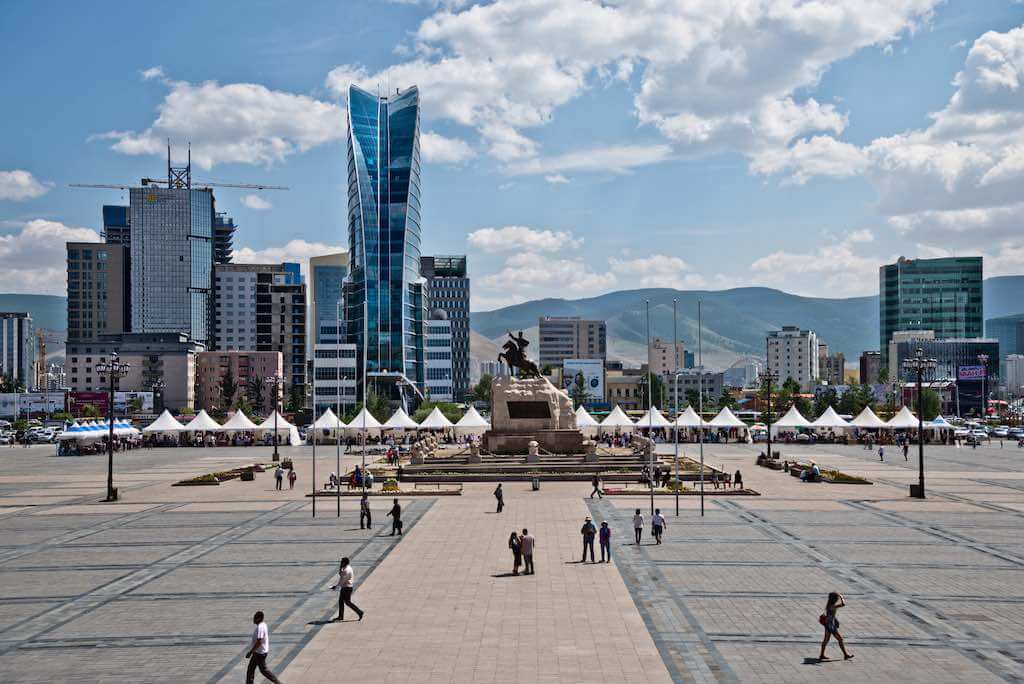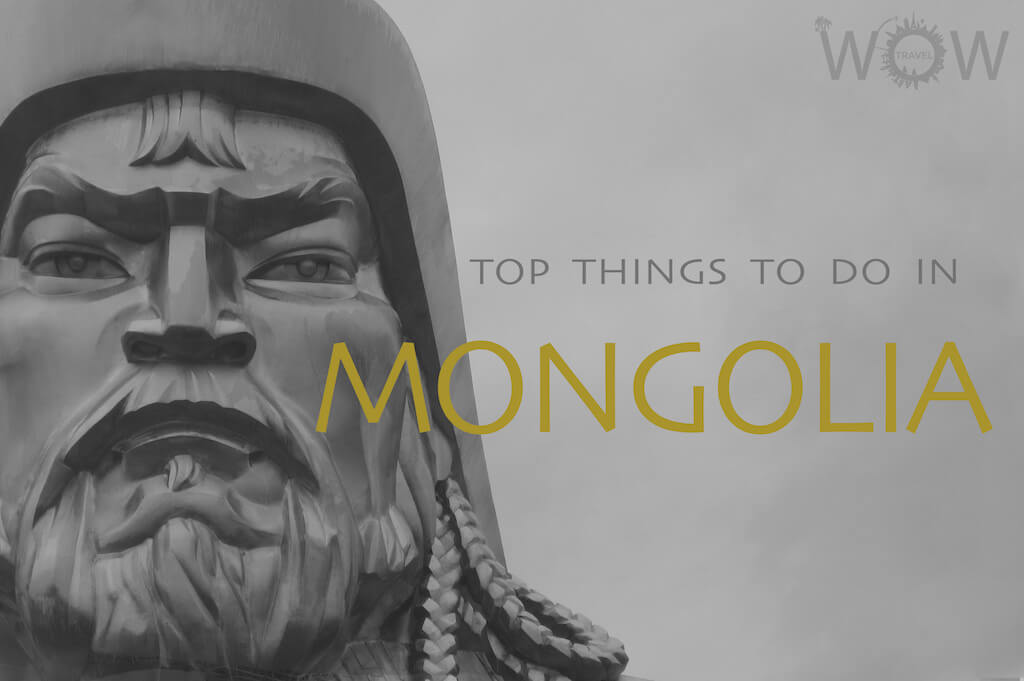Mongolia lies in central Asia between Siberia and China, at an average of 1,500 meters (5,800 ft) above sea level. It is the least densely populated country on the planet, a vast country with endless grassland, evergreen trees and rugged mountains. However, 45% of the Mongolian population lives in the busy capital, Ulaanbaatar, where life is a lot more up-to-date and travelers will find ample museums, shops, restaurants, bars and clubs. Check out our Top 7 Things To Do In Mongolia.
[booking_product_helper shortname=”mongolia”]
Ulaanbaatar
1
We never found a city’s name with a more accurate translation. Ulaanbaatar or Ulan Bator as they used to call it centuries ago means literally Red Hero and it is indeed a hero in the region. It is a city where Buddhism and their Nomadic past blend with modernity and western culture in harmony. Ulaanbaatar houses numerous museums, monasteries, an opera house as well as shopping centers, nightclubs, bars and cafes, three large cinemas, one modern ski resort, two large indoor stadiums and more.


Choijin Lama Temple
2
Located in the city of Ulaanbaatar, this Buddhist monastery is a good place to start your visit to Mongolia due to its beautiful architecture and the history is holds within its walls. The main temple houses an extensive collection of religious instruments, thangka paintings, a copy of the 108-volume Kangyur and hand-printed 226-volume Tengyur brought from Tibet by the Bogd Khan. the monastery also displays an 18th-century gilt statue of Buddha Sakyamuni with a statue of Choijin Lama Luvsankhaidav on the Buddha’s right.

Erdene Zuu Monastery, Orhon Valley
3
According to local tradition and historians, this may be the older standing Buddhist monastery in Mongolia. Erdene Zuu Monastery has been partially destroyed many times in different wars throughout history but it was rebuilt in the 18th century and around the year 1872, 62 temples were remodeled and almost 1000 monks used to live there. The monastery reopened its doors in 1965 as a museum and it was not until Communism fell in 1990 that the monastery became alive again as one of the most important religious centers in the country.


Genghis Khan Statue
4
He was the founder and Emperor of the Mongol Empire, which became the largest contiguous empire in history. This monument is a 40 meter (131 ft) tall statue of Genghis Khan on horseback symbolically pointing east towards his birthplace. Visitors walk to the head of the horse through its chest and neck, where they can have a panoramic view.

Lake Hovsgol
5
Lake Hovsgul is the largest freshwater lake in Mongolia by volume, and second-largest by area. Khuvsgul is one of seventeen ancient lakes in the world, being more than 2 million years old, and the most pristine. It is part of a national park which is home to a large variety of wildlife such as musk deer, brown bear, ibex, Siberian moose, argali, elk, wolf, sable and more.

Flaming Cliffs (Bayanzag)
6
This area of Mongolia became famous for being the place where first discovery of dinosaur eggs happened. However, its incredible beauty continues to attract visitors from all over the world. Its dunes, red rocks, desert, the silence and peace are sometimes a good reason to drive to this unique place even if you are not Dinosaurs lover.

Gorkhi-Terelj National Park
7
The third largest protected area in the country, Gorkhi Terelj National Park was established in 1993. The Gorkhi-Terelj National Park borders with the Khan Khentii Strictly Protected Area and receives the largest number of visitors due to its natural setting and proximity to Ulaanbatar. Terelj is named after the Terelj river and is an area of endless slopes and valleys with high-eroded rock formations, mountains covered in dense forests. Source: mongoliagercamps

Just So You Know…
- The Mongolian Stock Exchange is the smallest in the capitalist world and is housed in a refurbished children’s cinema.
- After Genghis Khan died in August 1227, his body was returned to Mongolia and buried in an unmarked grave, according to his request. At the time of his death, his empire stretched from Beijing to the Caspian Sea.
- Snow leopards are native to Mongolia. A quarter of the world’s population lives here.
- Despite its landlocked status, Mongolia has many salt lakes. Mongolian lakes and rivers contain more than 50 unique fish species.
- Genghis Khan is considered the founding father of Mongolia. He came to power by uniting many of the nomadic tribes of northeast Asia and establishing the largest empire in the world, exceeded only by the British Empire in the 19th century.
- The name Mongol comes from a small tribe whose leader, Ghengis Khan, began a conquest in the 13th century.
- Mongolians believe that if you see a shooting star, that means somebody is dying, so instead of making a wish, they whisper a prayer.
- Whistling indoors is taboo in Mongolia. They believe this practice calls evil spirits into the building or home.
- The Gobi desert used to be a thriving sea. There are many fossils all around, some of them are even dinosaur fossils. Tourists can actually pick up dinosaur fossils and take them along as souvenirs.
